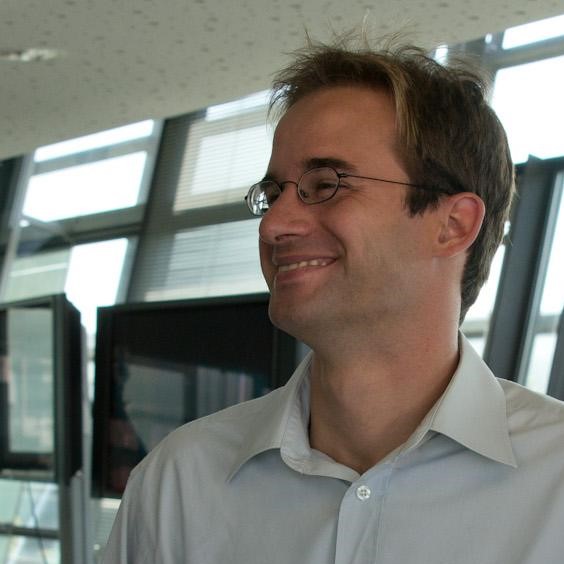A key prerequisite for successful projects: collaboration
Everyone is talking about digital transformation these days, but introducing digital solutions in practical terms is often more difficult than people think. Transformation is not just about technical solutions; the nuts and bolts of processes and business models also have to be transformed. What’s needed is a holistic solution, as Steinbeis experts have identified. They have now founded a Steinbeis Consulting Group called Networks & IT Structures to support companies with the challenges of digital transformation.
For businesses, digital transformation is an essential process, nd only a few conscientious managers are likely to buy into the idea that they can introduce new software and then everything will be “sorted.” Most managers have now worked out that technical solutions and software are only one side of the coin. Transformation is about change – and that’s the other side of the coin. All change presents organizations with new challenges, and depending on the company culture and history, communication styles, and levels of hierarchy, there are a variety of important things to think about when undergoing transformation.
The Steinbeis Consulting Group (SCG) Networks & IT-Structures was founded to help companies pinpoint and implement solutions that are individually matched to both sides of the coin. The group helps with the selection, design, and introduction of software and also provides advice and support with all kinds of changes involving technology. The SCG consists of a number of experienced experts in digitalization and business transformation. They currently work for a variety of Steinbeis Enterprises, offering a diversity of skills under one roof to secure successful project outcomes for their clients.
There’s an old saying: garbage in, garbage out – and it’s perhaps even more valid for digital transformation. When inefficient or bad processes are digitalized like for like, all you get are inefficient or bad “digital” processes. As a result, it’s important to start by analyzing processes and if necessary, making improvements and changes – or making things lean – first. Only then can the process of developing suitable standard or customized software begin. It is also advisable to go back and set priorities first and work through these step by step, especially if there are lots of processes involved. Experience shows that there is an aboveaverage likelihood that major software development projects will be suddenly put on hold or come in completely over budget. To do something about this, the SCG offers a list of agile software development methods. By using prototyping, initial results can be quickly scrutinized and optimized one after the other. The consultants help firms work in compact, self-organized teams because this produces better architectures, requirements, and designs. These tend to be more reliable and useful and make it easier to work on a more abstract level. To avoid falling into the usual trap of drafting a detailed, time-consuming, and expensive functional specification list, firms are provided with an analysis of requirements backed up by expert advice.
By this method, Employees at the company are brought on board just right from the start. After all, they’re generally familiar with the things a solution will need to do, so they contribute content and later they will actually be using the software anyway. This allows these key stakeholders to be part and parcel of the change process from the outset. Step by step, they are introduced to new ways of working and become sensitized to the reasons behind the change. A key aspect of this is the user experience (UX) – a comprehensible and appealing design for using software – because this is a decisive factor in whether a new solution is accepted, even though this is often underestimated. The Networks & IT Structures unit is aware of the significance of such aspects and – accordingly – gives these priority when selecting and developing software. By involving people affected by change, valuable feedback is gathered early in the process and integrating their ideas is therefore inexpensive. Carefully coordinating requirements also helps when buying standard software, because features are then only acquired if they’re actually needed. This also makes it possible to reduce the overall number of systems in use, with fewer interfaces and potential media transition points. This can be a huge relief for users. One example of a successful software solution that made it possible to digitalize old processes and redesign existing software is a documentation, analysis, and data management application for technical product developments. The team succeeded in reducing the time needed for engineers to find data, evaluate it, and produce graphs. They also managed to harmonize processes, which had previously been hampered by a large variety of sometimes redundant procedures. By introducing new and lean customized software, the team significantly reduced the extra time and effort that had to be invested. Our brains tend to make us react subconsciously to things likely to provide a reward. When an organization is about to undergo change, the people involved often have to adjust to new goals. It is incredibly important that they don’t run out of steam halfway through the journey. It is therefore crucial for management to provide suitable incentives for employees in the form of rewards that are worth going for. It is also tremendously important that management understand the reasons why change is needed, plus the causes, and that they are able to communicate this to others. This makes it possible to deal with any resistance to change, which is only normal when employees’ skills are eroded by changes or when people are expected to take on new and unfamiliar tasks. The consultants of the SCG Networks & IT-Structures also offer help in this respect.
To provide support with the digital transformation process, the SCG experts advise clients on topics such as change management, strategic diversity management, cultural change, conflict management, communication, and new working methods. Individual service packages are offered alongside teams that are specially tailored to each project to ensure they offer solutions that are the best possible fit with each challenge.
Contact

Johannes Eckstein

Birgit Nüchter

Beate Wittkopp

Maximilian Werling
Johannes Eckstein is director of NuCO, a Steinbeis Consulting Center. His Steinbeis Enterprise offers advisory services and the development of software, hardware, programming, software development, data networking, data analysis, evaluations, and simulation used in manufacturing, engineering, and the automotive field.
Steinbeis Consulting Center NuCOS (Stuttgart)
www.nucos.de
Birgit Nüchter is director of the Steinbeis Consulting Center for Leadership Competence and helps managers and other employees on the path to management to explore their own leadership skills and make full use of their personal abilities. Her work revolves around the topics of systemic coaching, the introduction of new methods such as design thinking and agile development, process optimization, and change management.
Steinbeis Consulting Center Leadership Competence (Stuttgart)
https://birgitnuechter.de/
Beate Wittkopp is director of TransferWorks BW, a Steinbeis Transfer Center. Her focus lies in interdisciplinary and trans-organizational network projects and collaboration on technology projects. She is interested in modern business management and the culture of leadership, and corporate strategies relating to diversity and equal opportunity.
Beate Wittkopp
Steinbeis Transfer Center TransferWorks-BW (Schönaich)
www.transferwerk-bw.de
Maximilian Werling is a project manager at Steinbeis Headquarters and looks at the topics of business competence evaluation, digital tools, the setting up and supervision of Steinbeis Enterprises, and the setting up and moderation of micro-networks in the Steinbeis Network, as s the case with the SCG Networks & IT-Structures.
Maximilian Werling
Steinbeis Headquarters (Stuttgart)

